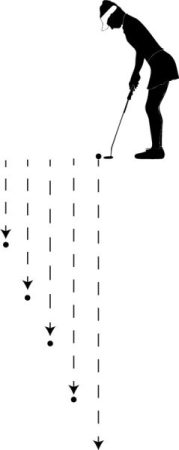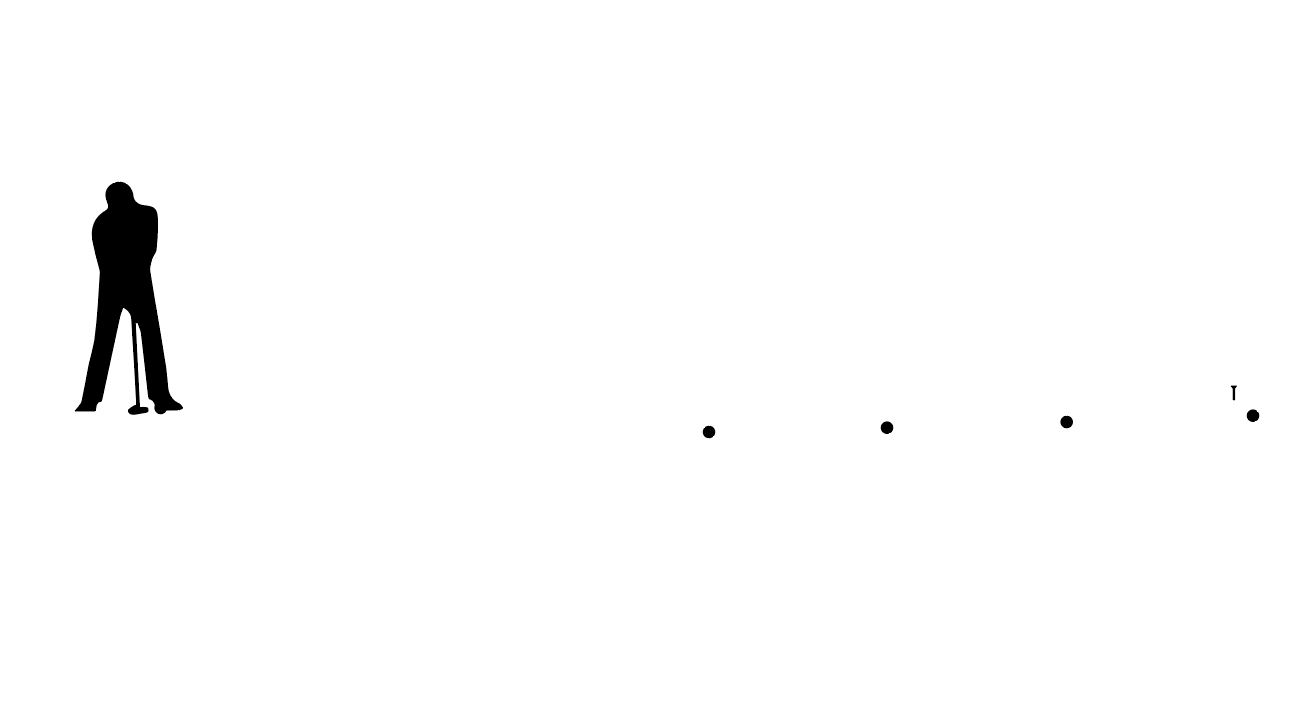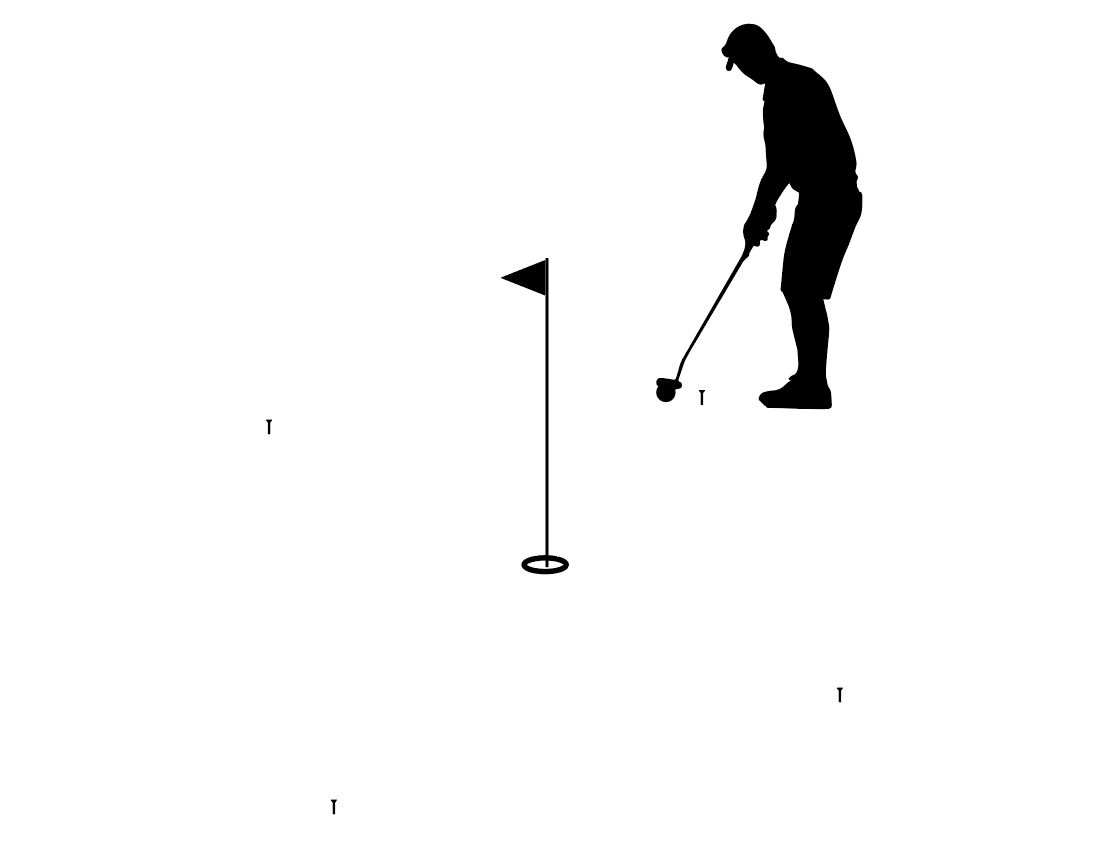Putting practice – we should all do it. The problem is, it’s so much harder to get motivated to work on those little taps (and miss the hole over and over again) than to go to the range, smash the ball, and watch it fly away in a nice arc. But, as I’m sure you know, if we could all eliminate those 3-putts, our scores would be so much better.
So, instead of plopping a few balls down and taking aim at the nearest pin, let’s approach putting practice with a plan that gives it some structure, and makes it more interesting, too.

We’ll focus on the number one way to eliminate 3-putts: Distance control, or how to get close enough to the hole with the first putt that the second putt is easy to make. Here are a few drills designed to help you improve just that:
Stroke Length There and Back (swinging longer instead of harder)
-
- Line up 4-5 balls, making sure that you have a fairly level, open area in front of you.
- Putt your first ball using a nice relaxed pendulum motion with a short backswing. Make a mental note of the length of the backswing, for example in relationship to your back foot.
- Putt your second ball with the same relaxed pendulum motion, but a slightly longer backswing. Observe how much length this added to your distance.
- Proceed to putt the remaining balls, each with a slightly longer backswing. Once done, you should have a rough line of balls with the first one closest to where you started and the last one farthest away.
- Now go to the first ball. Remember the length of the first back swing. Putt the ball back toward your starting position. It should end up roughly where you started.
- Proceed to do this with all the balls. If you do this well, the balls will end up lined up about like they were at the start.


Ladder Drill (long distance stroke drill)
-
- Place markers or tees in a straight line at 10, 15, 20 and 30 feet away from the hole or marker.
- Putt from the 10-foot mark and work your way backwards. Do not try to make the putt. Instead, try to get the ball to stop within 1 foot of the hole.
- Start over if you don’t get the ball within 1 foot of the hole.
- As you progress, decrease the size of the target from one foot from the hole to 6 inches and eventually to sinking the putt.
Reverse Ladder (speed drill)
-
- Place a marker or tee 30 feet from starting position.
- Putt your ball to the 30 foot marker (get within 1 foot).
- Now, putt your next ball 1 – 2 feet closer to than your last ball.
- Repeat until the last ball you putt is just 2 feet in front of you.

Touch Drill (speed and short putting drill)
-
- Position yourself within 5 feet from the hole.
- Putt your first ball so that it will reach the edge of the hole and then slowly topple into the hole.
- Putt your second ball so that it hits the back wall of the hole, pops up and goes into the hole.
- Putt your third ball so that it glides into the hole at the pace you want.

Compass Drill (combining distance and slope)
-
- Place four markers evenly spaced around the hole, one club length from the hole.
- Putt your ball from each marker, adjusting for the angle of the slope.
- If you missed some, repeat the entire circuit until you have made each putt once.
- Repeat with your markers at 2, 3, 4… club lengths. Once you get past 2 club lengths, change your goal from making the putt to getting the putt to within 6-12 inches of the hole.
- Do it like the pros and try to miss on the high side of the hole.
Next time you’re out putting, try some or all of these drills!
Remember, no two putts are the same, so don’t get bogged down trying to repeat the same putt over and over again. Instead, think of the different lengths of backswing like different clubs in your bag. Practice them until get some consistency. Then you can pick the right one, walk up to your ball, and focus on your line instead of the movement you are going to make.
Happy putting!
